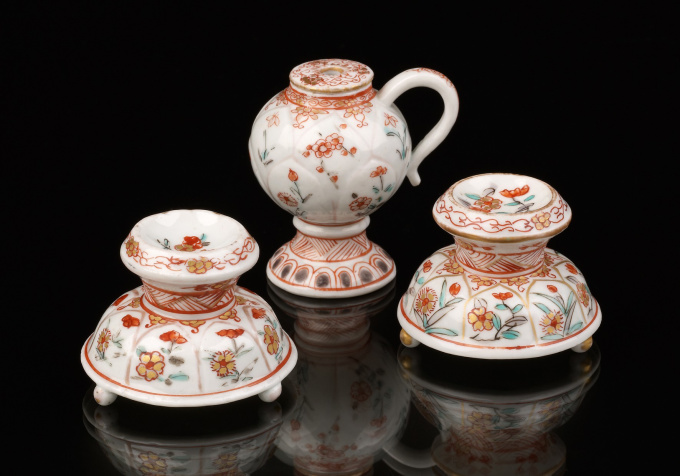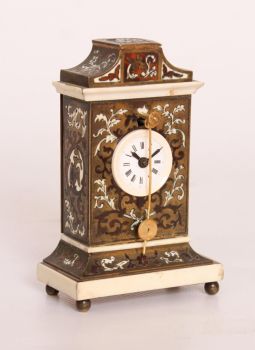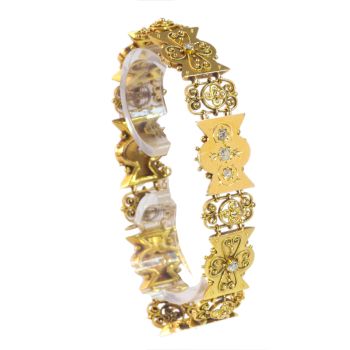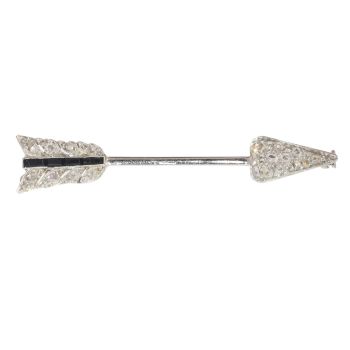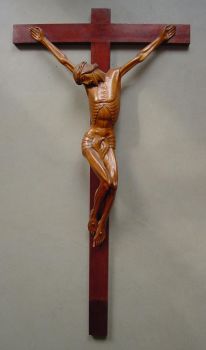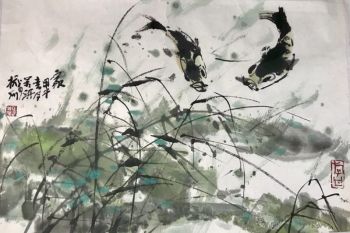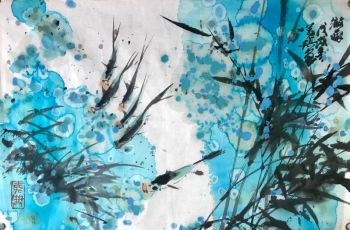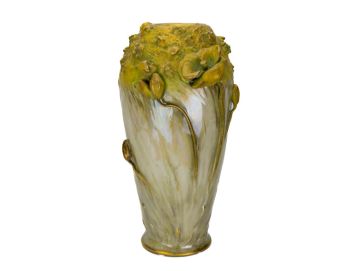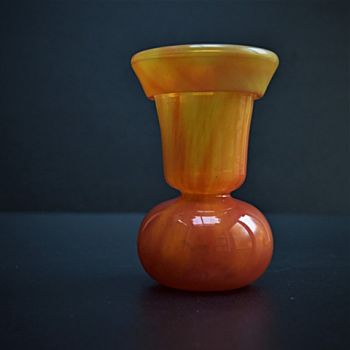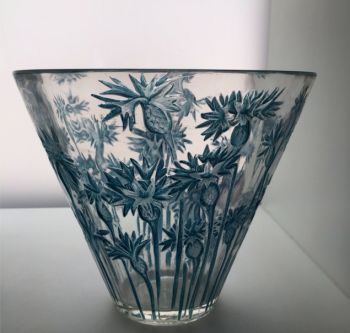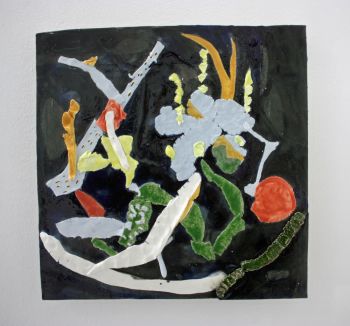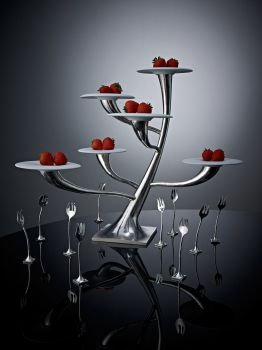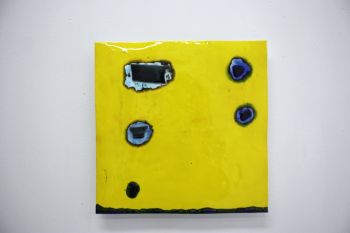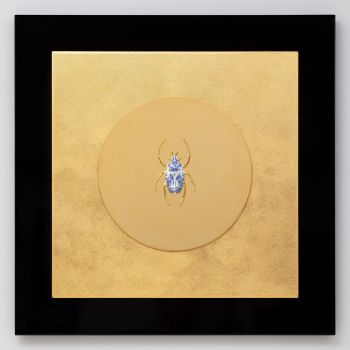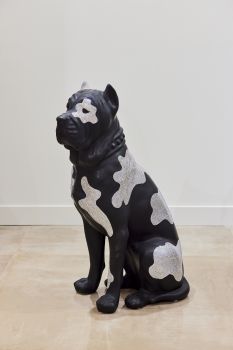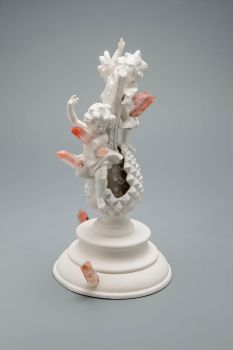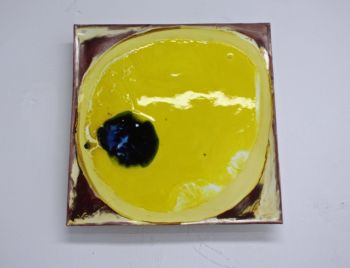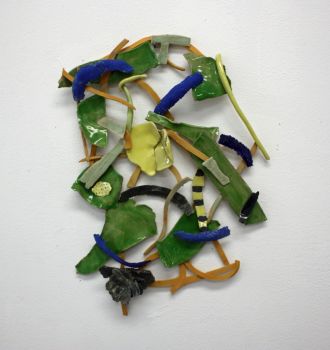Two Saltcellars and a Mustard Pot, Japan, Dutch decorated 1700
Unknown artist
Porcelain
4 cm, ø 5 cm
Currently unavailable via Gallerease
- About the artworkThese saltcellars and mustard pot are made in Japan in Arita. They were shipped to Europe undecorated and further processed in Delft. Although the name suggests otherwise the so-called Amsterdams Bont was mainly applied in Delft. The decorators from Amsterdam did not have the sophistication that was achieved by the Delft craftsmen.
The shape of these Japanese saltcellars is derived from European models of the 17th century. The mustard pot also has a design inspired by European examples.
Salt and mustard were indispensible condiments on the tables of the 17th and 18th century.
A third saltcellar with a similar decoration can be found in the collection of the British Museum in London (JA F.555).
Literature:
H. Espir, European Decoration on oriental porcelain 1700-1830, p.211. - About the artist
It might happen that an artist or maker is unknown.
Some works are not to be determined by whom it is made or it is made by (a group of) craftsmen. Examples are statues from the Ancient Time, furniture, mirroirs, or signatures that are not clear or readible but as well some works are not signed at all.
As well you can find the following description:
•“Attributed to ….” In their opinion probably a work by the artist, at least in part
•“Studio of ….” or “Workshop of” In their opinion a work executed in the studio or workshop of the artist, possibly under his supervision
•“Circle of ….” In their opinion a work of the period of the artist showing his influence, closely associated with the artist but not necessarily his pupil
•“Style of ….” or “Follower of ….” In their opinion a work executed in the artist’s style but not necessarily by a pupil; may be contemporary or nearly contemporary
•“Manner of ….” In their opinion a work in the style of the artist but of a later date
•“After ….” In their opinion a copy (of any date) of a work of the artist
•“Signed…”, “Dated….” or “Inscribed” In their opinion the work has been signed/dated/inscribed by the artist. The addition of a question mark indicates an element of doubt
•"With signature ….”, “With date ….”, “With inscription….” or “Bears signature/date/inscription” in their opinion the signature/ date/ inscription has been added by someone other than the artist
Artwork details
Related artworks
- 1 - 4 / 12
- 1 - 4 / 6
René Lalique
An early vase 'Bluets' designed by Rene Lalique (1860-1945)1910 - 1920
Price on requestLennart Booij Fine Art and Rare Items
1 - 4 / 24Unknown artist
A large Japanese Imari porcelain 'VOC Groningen' dish1800 - 1925
Price on requestZebregs & Röell - Fine Art - Antiques
Samuel Dejong
Anatomia Blue Heritage, Atlas Closed2017 - 2019
Price on requestVilla del Arte Galleries
Unknown artist
Series of 6 Chinese cups and saucers (Yongzheng period)1722 - 1735
Price on requestKuipers Kunst & Antiek
1 - 4 / 24

